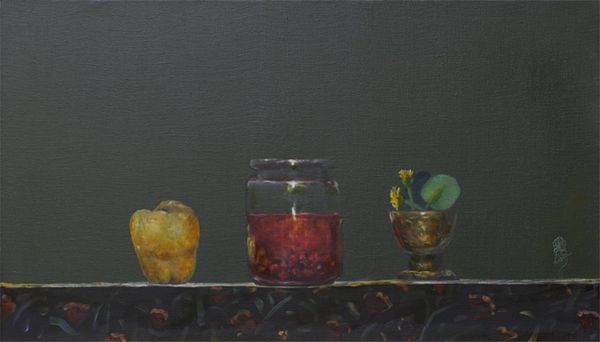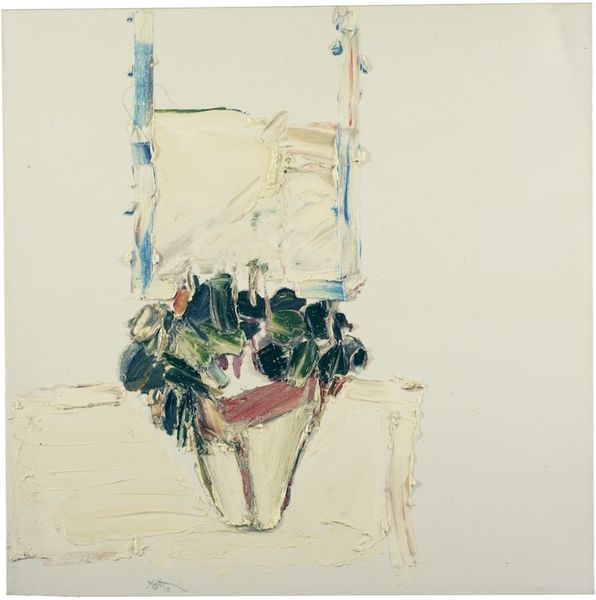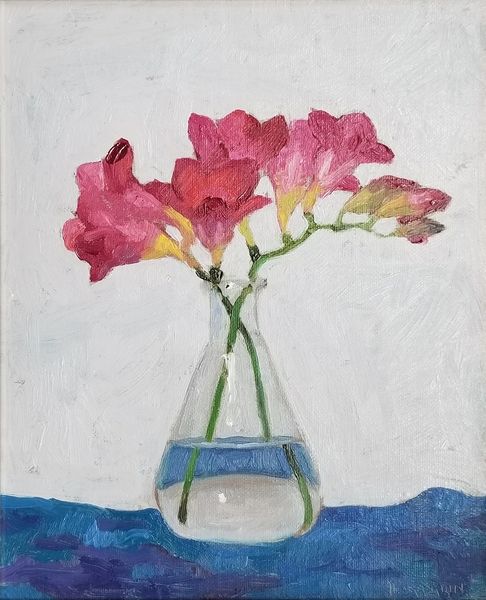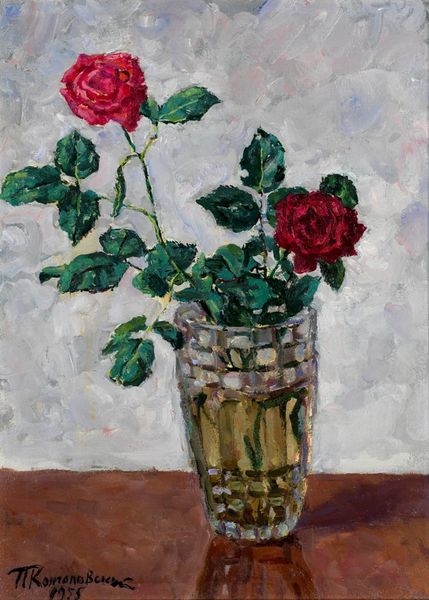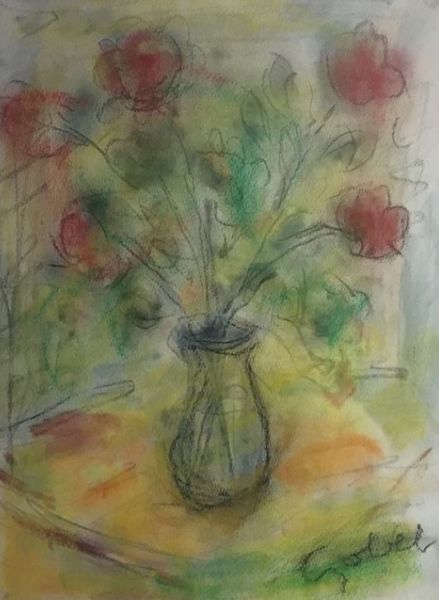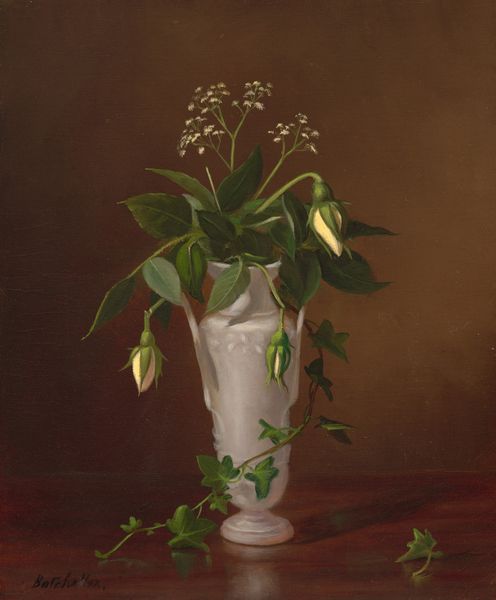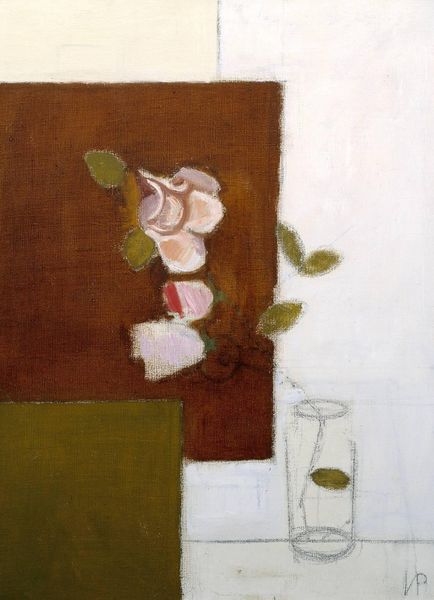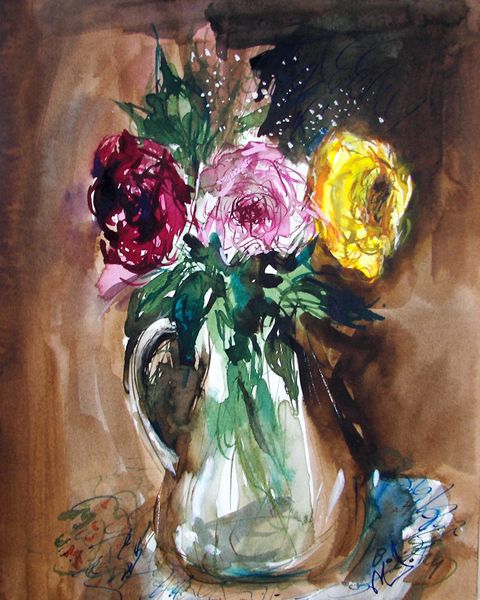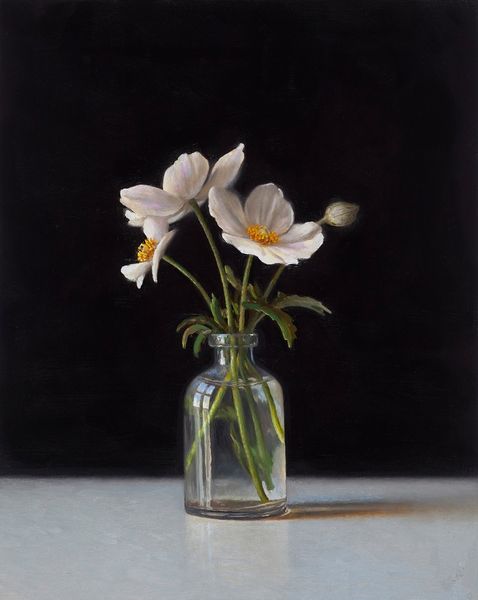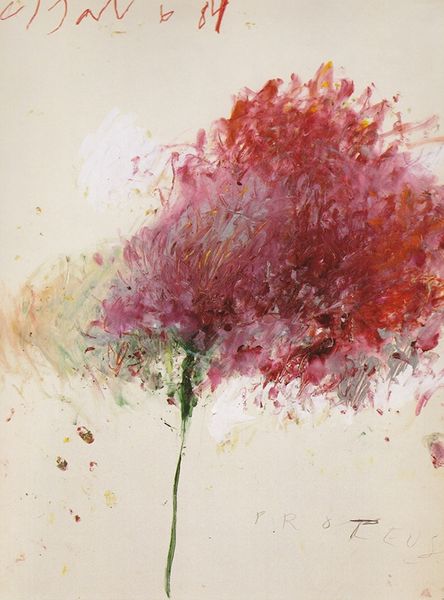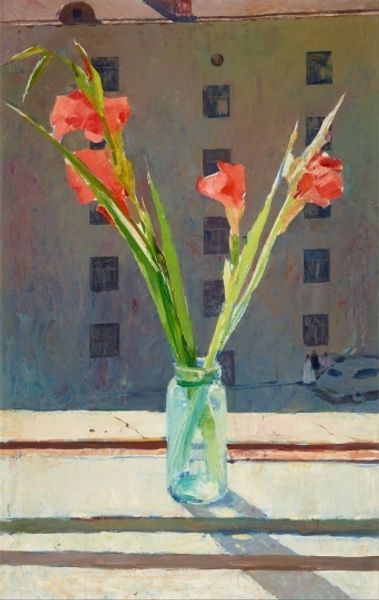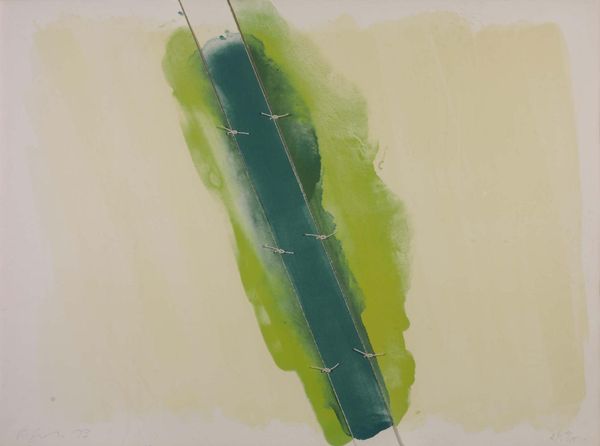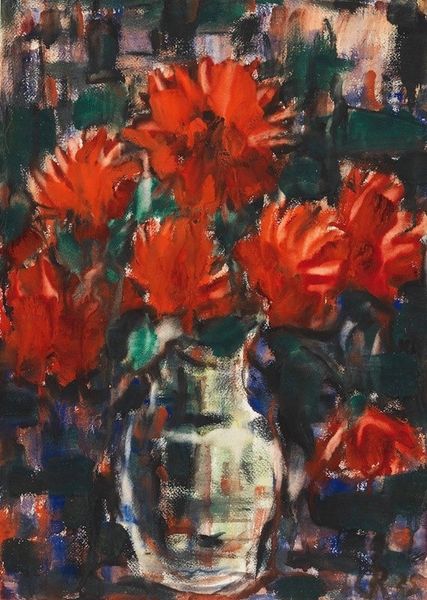
painting, oil-paint, photography
#
still-life
#
contemporary
#
painting
#
oil-paint
#
photography
#
oil painting
#
plant
#
realism
Copyright: Stefan Caltia,Fair Use
Curator: Welcome. Here we have "Country Mallows in Glass Vessel," an oil on canvas piece created by Stefan Caltia in 2005. Editor: It strikes me as simultaneously serene and unsettling. The muted palette amplifies a feeling of almost suspended animation. There is something about the translucence that almost feels ghostly. Curator: That spectral quality arises in part from Caltia’s meticulous layering. Notice the way the light catches and bends through the glass—how the flowers themselves seem to dissolve into the water. The structure is masterful: a geometric base juxtaposed with the delicate, organic forms above. Editor: It's tempting to read into that juxtaposition as something more. The sharp lines versus the softening forms… are we seeing a commentary on containment, perhaps? The "country mallows" themselves suggest a vulnerability, set against an almost institutional backdrop of cold greys. What socio-political elements have come to bear on domestic life? Curator: Perhaps, but I see it more as a study in contrasts for its own sake. Consider the textural variations—the smooth glass, the rough canvas, the delicate petals rendered with near-photographic precision. This, coupled with a hyper realistic and almost staged still life, suggests less about the world external to it, and more about itself. Editor: But can we divorce the object from the world that frames its conception? The title positions it in the countryside. And glass is not only fragile but also indicative of an advanced culture and privilege. It invites considerations of class, the rural vs urban divide. What does it mean to pluck this flower and place it within these clear yet artificial bounds? Curator: Those interpretations certainly enrich the piece, though the work is clearly a still life first and foremost. This approach allows it to examine questions about mimetic representation in painting; less an explicit narrative than an intricate play of surface and light. Editor: And is not all art implicitly a reflection of our present social anxieties? It seems that such seemingly simple works offer avenues to engage with issues of displacement, fleetingness, and class divisions. Curator: Perhaps we can say that, either way, Caltia offers the viewer an intricate tableau. Editor: One that certainly repays close consideration through the diverse critical lenses.
Comments
No comments
Be the first to comment and join the conversation on the ultimate creative platform.
